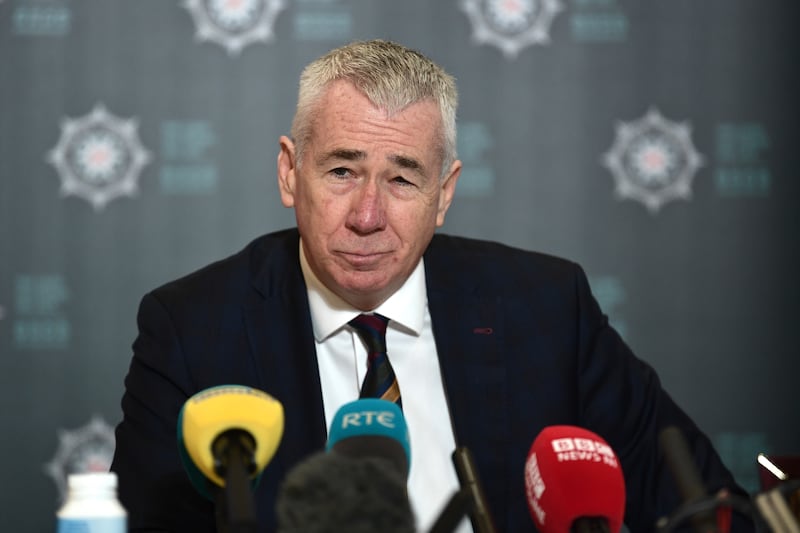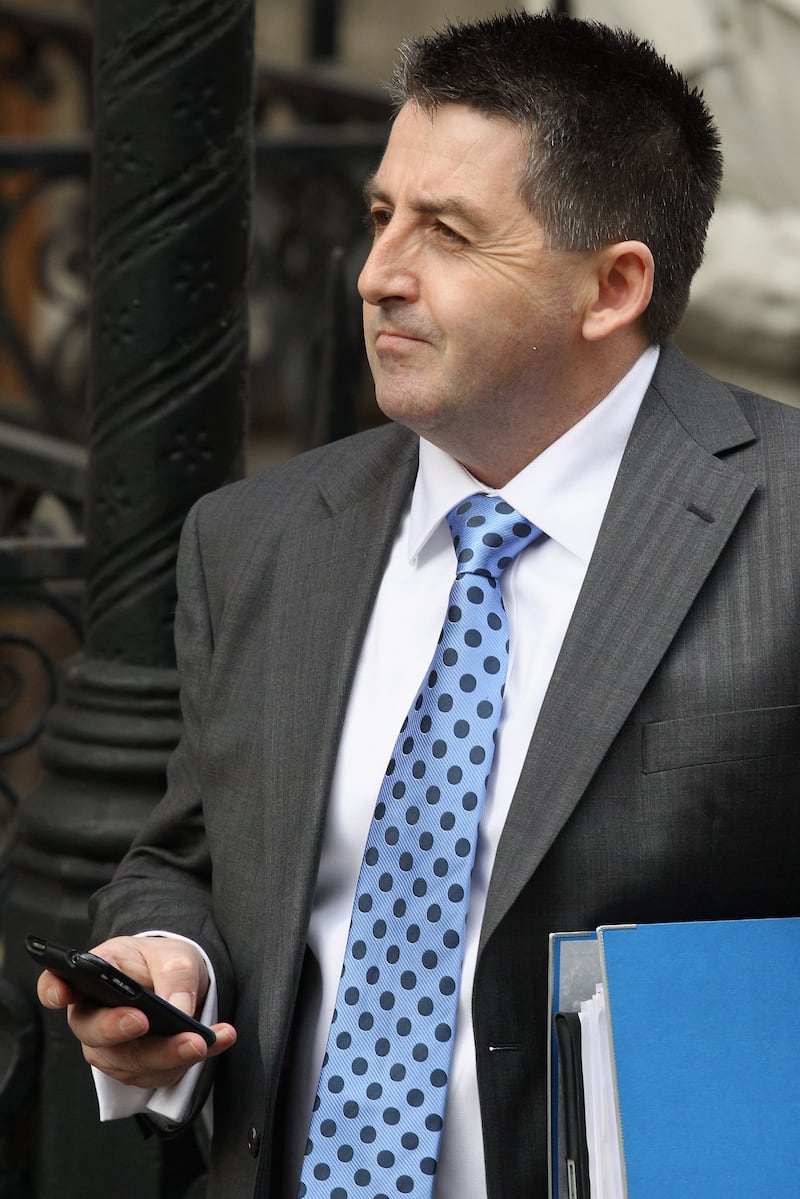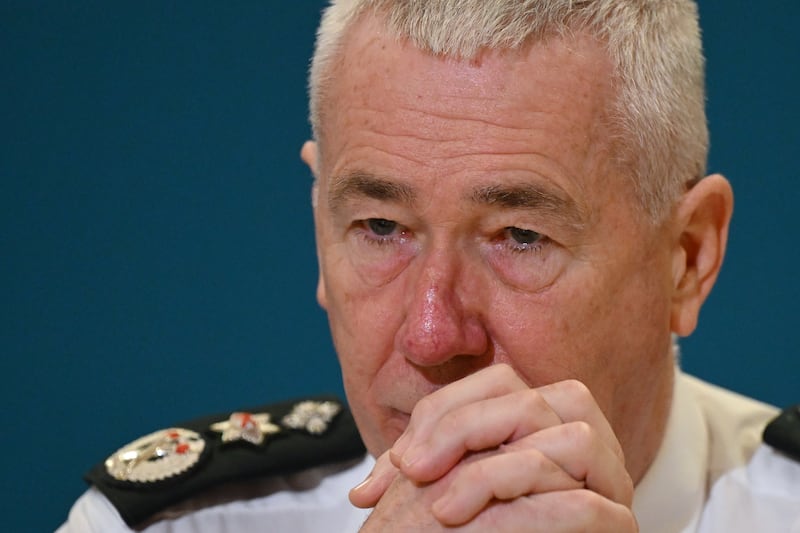If he could go back in time, Ian Hurst would never have outed the British army’s top IRA spy.
Unmasking Belfast builder and senior IRA member Freddie Scappaticci publicly as the double agent code-named Stakeknife more than 20 years ago was, he believed, a risk worth taking “at the start” to exposé the British state’s involvement in Troubles-related killings. But the fallout from the revelation over the past two decades has led the former British army intelligence officer to regret his decision.
In an interview with The Irish Times following the publication of a damning £40 million inquiry into Stakeknife’s activities, Hurst (63) reflected on the impact of his actions on families whose loved ones were victims of a notorious IRA internal security unit known as the “nutting squad” – overseen by Scappaticci during the 1980s – that tortured and killed suspected informers.
Would Scappaticci have been identified as the high-ranking mole if Hurst had not named him in 2003?
RM Block
“Absolutely he would not. And we paid a price collectively for that. The families paid a price,” Hurst said. “If I had that time again, if I had a Tardis, I would go back and it [outing Scappaticci] wouldn’t happen because of the naivety of it.
“What has happened is that it has really caused hurt and they’ve not gained – that is, the families – or indeed the system hasn’t learned from its past mistakes, and that’s where the naivety was evident in me.
“For that, I’m really sorry.”
Scappaticci, who always denied he was Stakeknife, died in March at the age of 77. He fled to England after being named in the media in 2003 and lived there under an assumed identity until his death.
The west Belfast man is not named in the inquiry report, known as Operation Kenova, due to a UK government policy of “neither confirm nor deny” (NCND) relating to sensitive intelligence issues. Despite being regarded as the “jewel in the crown” of British military intelligence, the seven-year investigation found that Stakeknife probably cost more lives than he saved.
Delivering the report’s interim findings in a Belfast hotel earlier this month, author Jon Boutcher said that while he understood the importance of protecting agents’ identities, he hoped that Stakeknife will be named in the final Kenova report. Boutcher, now the chief constable of the Police Service of Northern Ireland, admitted that the position of not identifying him was “no longer tenable”.
However, Hurst was scathing of the omission. “This report has taken the best part of seven years and has still not definitively identified Stakeknife to be Mr Scappaticci. We’re still dancing on the pinheads of semantics,” he said.
Born in Bolton, Hurst was a member of the British army’s Force Research Unit (FRU) between 1981 and 1990. The controversial military intelligence unit recruited and ‘handled’ Stakeknife and other informers during the North’s conflict. He never met Scappaticci but “followed his career with interest”.
There were no prosecutions on the back of the Kenova inquiry as the North’s Public Prosecution Service concluded there was “insufficient evidence” to pursue cases against 32 people – which included some ex-FRU officers and other retired British army officers as well as alleged IRA members.
“The report is underwhelming, it’s exactly what I expected, I’m not sure there’s any value in it because more or less everything that’s been said about the Stakeknife story has been said. I’m not meaning to be rude,” said Hurst, who left the army after marrying a Co Donegal nurse more than 30 years ago.
“ ... I’m not advocating any prosecutions, what I’m asking for is clarity in relation to who knew what, where, when and how. That way, the families and the public get clarity as to what did happen. My fear at the outset was that families, for want of a better word, would be duped; that’s exactly what I think has happened.”
Others, including the brother of the first victim linked to “Scap”, do not agree with this assessment.
Seamus Kearney received further updates from the Kenova team earlier this week about his 20-year-old brother Michael, who was “executed” by the IRA in 1979 after he was wrongly accused of being an informer. It was confirmed to him in a private briefing with investigators before the report’s publication that Michael’s death could have been prevented had the security forces acted on intelligence passed on by agents.
“Ian Hurst didn’t lose a family member, he’s talking in the abstract. I’m talking about someone this happened to. Regardless of anything, it’s still painful – on all sides,” said Kearney.
“I can only talk about my own case, but through Kenova I got access to secret intelligence material and learned a few days ago that three members of the IRA’s internal security unit were reporting back that Michael was in grave danger during the 16 days he was missing after his abduction.
“If three members of the internal security are reporting back, then it stands to reason there’s more than Scappaticci feeding information back about Michael. So the unit’s infiltrated – and no one acted on that information.”
Neither the British army nor RUC special branch handlers intervened to save the west Belfast apprentice electrician’s life; the classified files show Michael Kearney, who joined the IRA in 1978, asked to say a prayer before being shot dead by two different men on a remote border road in Co Fermanagh in the early hours of July 12th, 1979.
The Kearney family is taking a civil case against the British ministry of defence. “The Kenova investigator told me they will support us. That’s because [the] British government was complicit in the murder of my brother,” added Kearney. “I’m not criticising Ian Hurst – I think he has done a service to everyone by outing Scappaticci.”
Criticism of the “myths” regarding Stakeknife’s reputation as the “golden egg” of British military intelligence who saved “hundreds of lives” is made in the 208-page report; it found his enhanced intelligence status was rooted in “fables and fairytales” and that the true number of lives saved was more likely between high single figures and low double figures.
Examples of “inaccuracies” referred to by Kenova include a claim made in a 2004 book (co-authored by Hurst. which he wrote under the pseudonym Martin Ingram) regarding security forces protecting Stakeknife by directing loyalist paramilitaries away from him and towards other targets.
“This did not happen,” the report states. It adds: “The book also attributes a number of murders to Stakeknife which (irrespective of the truth or falsity of claims about his identity) had nothing to do with the relevant individual.”
Within hours of the report’s publication, Hurst emailed Boutcher to raise concerns about the classified files that formed the basis of Kenova’s findings.

In the report, Boutcher acknowledged the difficulties for Troubles-related investigations in obtaining “sensitive intelligence” material; however, he states his team was able to access records “denied to previous investigations, which has enabled us to provide important information to families”.
Hurst rejected this assertion and insists Kenova cannot present a “definitive report in any way, shape or form” because key intelligence documents have been destroyed. “The classified document registry for Scappaticci and indeed, for the FRU, was absolutely decimated,” he said. “This is why it’s really important that people don’t take this report at face value.”
The inquiry rubbished “inherently implausible” claims “derived from FRU assessments” and “widely accepted by the security forces” that intelligence forwarded by Stakeknife saved “countless” lives. Instead, it found that his continued operation as an agent probably resulted in “more lives being lost than saved”.
British security forces turned a “blind eye” and allowed murders to be carried out and go unpunished to protect its agents in the IRA, something that would be “never, ever allowed today”, Boutcher told a press conference following the report’s release.
However, Hurst doesn’t accept the finding in relation to the lower number of lives saved through Stakeknife’s activities.
The Irish Times asked the Kenova team to respond to concerns raised by Hurst, in particular the intelligence material used to inform the inquiry’s findings. In a statement, it said the report’s findings and recommendations are based on “years of investigation and access to a huge range of official material and information”.
“We appreciate there are numerous different views and theories about the activities of the agent Stakeknife, which are often based on misinformation or misrepresentation. In line with our victim-focused approach, further detail will be provided directly to affected families in individual reports before a final report which will be published in due course.”

Hurst told The Irish Times he has “no confidence whatsoever” that the final report will be “anything other than what it is now”. He said he is happy for those families who are satisfied with the individual findings but believes others will feel “short-changed”.
“Ultimately, my only genuine concern is that I don’t aggravate or cause any further hurt to victims’ families. If the Kearney family are genuinely getting some closure from this, I absolutely respect that.
“The price of outing Scappaticci, in my opinion, at the start, was worth it. But with the benefit of hindsight, you look back – and I’m not just taking it from a personal perspective.
“I genuinely believe that if you think about the film Men in Black, when the man’s got the old transponder device that clears your memory, I think it would be much kinder if the Men in Black turned up and just went ‘zap’, and we went back to living in naivety.”
Listen to our Inside Politics Podcast for the latest analysis and chat
- Sign up for push alerts and have the best news, analysis and comment delivered directly to your phone
- Find The Irish Times on WhatsApp and stay up to date



















